# 一、 npm run export导出文件上传到CDN
在项目中执行
npm run export后导出outCDN文件上传到CDN
// scripts/upload.js
const fs = require('fs');
const path = require('path');
const OSS = require('ali-oss');
const filePath = path.join(__dirname,'../outCDN');
const excludeFiles = ['index.html']
const client = new OSS({
region: 'oss-cn-shenzhen',
accessKeyId: '',
accessKeySecret: '',
bucket: ''
});
// 遍历文件夹中所有文件
async function uploadFile(filePath){
//根据文件路径读取文件,返回文件列表
fs.readdir(filePath,async function(err,files){
if(err){
console.warn(err)
}else{
//遍历读取到的文件列表
files.forEach(async function(filename){
//获取当前文件的绝对路径
const filedir = path.join(filePath,filename);
//根据文件路径获取文件信息,返回一个fs.Stats对象
fs.stat(filedir,async function(eror,stats){
if(eror){
console.warn('获取文件stats失败');
}else{
const isFile = stats.isFile();//是文件
const isDir = stats.isDirectory();//是文件夹
if(!excludeFiles.includes(filename) && isFile){
const fileKey = `${filedir.split('outCDN/').pop()}`
try {
// object表示上传到OSS的Object名称,localfile表示本地文件或者文件路径
let data = await client.put(fileKey,filedir);
console.error('upload success: %j', data);
} catch(err) {
console.error('upload failed: %j', err);
}
}
if(isDir){
uploadFile(filedir);//递归,如果是文件夹,就继续遍历该文件夹下面的文件
}
}
})
});
}
});
}
uploadFile(filePath)
# 二、处理next build后的文件
执行
next build以后,把.next、package.json、server.js、next.config.js、ecosystem.json拷贝到一个文件夹统一管理,最后部署这个文件夹下的内容即可
// scripts/copyFiles.js
const fs = require( 'fs' ),
stat = fs.stat;
const path = require('path')
const includeFiles = ['package.json','server.js','next.config.js','ecosystem.json']
/*
* 复制目录中的所有文件包括子目录
* @param{ String } 需要复制的目录
* @param{ String } 复制到指定的目录
*/
const readDir = function( src, dst ){
// 读取目录中的所有文件/目录
fs.readdir( src, function( err, paths ){
if( err ){
throw err;
}
paths.forEach(function( filename ){
var _src = src + '/' + filename,
_dst = dst + '/' + filename,
readable, writable;
stat( _src, function( err, st ){
if( err ){
throw err;
}
// 判断是否为文件
if( st.isFile()){
// 创建读取流
readable = fs.createReadStream( _src );
// 创建写入流
writable = fs.createWriteStream( _dst );
// 通过管道来传输流
readable.pipe( writable );
}
// 如果是目录则递归调用自身
else if( st.isDirectory()){
copyDir( _src, _dst, readDir );
}
});
});
});
};
// 在复制目录前需要判断该目录是否存在,不存在需要先创建目录
const copyDir = function( src, dst, callback ){
fs.exists( dst, function( exists ){
// 已存在
if( exists ){
callback( src, dst );
}
// 不存在
else{
fs.mkdir( dst, function(){
callback( src, dst );
});
}
});
};
const copyFile = ()=>{
includeFiles.forEach(filename=>{
fs.createReadStream(path.join(__dirname,'../'+filename)).pipe(fs.createWriteStream(path.join(__dirname,'../deployBuildFiles',filename)))
console.log('拷贝完成!')
})
}
// 复制目录
copyDir( '.next', 'deployBuildFiles/.next', readDir);
// 拷贝文件
copyFile()
# 三、pm2之ecosystem部署项目
PM2部署应用流程,通过pm2的配置文件来部署 http://pm2.keymetrics.io/docs/usage/deployment/
# 3.1 配置部署脚本文件
在项目根目录添加
pm2的部署脚本文件ecosystem.json
部署文档详情:http://pm2.keymetrics.io/docs/usage/deployment/
{
"apps": [
{
"name": "goodsapp", //pm2运行的应用名称
"script": "server.js",//服务启动入口
"env":{
"COMON_VARIABLE": "true"
},
"env_production": {
"NODE_ENV": "production", //env
"HOST": "localhost"
}
}
],
"deploy": {
// 最后这样使用 pm2 deploy ecosystem.json production
"production": {
"user": "user_00",// 服务器用户名
"host": ['192.68.1.201'],//服务器ip地址 可写多个
"ref": "origin/master",//从指定分支拉取代码
"repo": "http://p.yesdat.com/diffusion/49/goodsh.git",
"path": "/data/poetry/testDir/prev-goods.yesdat.com", //上传本地目录到服务器
"ssh_options": "StrictHostKeyChecking=no",
"post-deploy": "npm install --registry=https://registry.npm.taobao.org && npm install && pm2 startOrRestart ecosystem.json --env production",//部署脚本
"env": {
"NODE_ENV": "production"
}
}
}
}
或者简单
scp上传到服务器
scp -P36000 -r deployBuildFiles/.next user_00@192.168.1.201:/home/data/services/goods-prev.yesdat.com/
更多详情 http://blog.poetries.top/2018/12/03/linux-scp
# 3.2 部署Nginx配置规则
在
nginx安装目录下的vhost中新建一个xx-3000.conf的配置文件
- 在Nginx目录
/etc/nginx下执行sudo /usr/sbin/nginx -t检测配置文件是否成功

upstream goodsapp { // website项目的目录名称
server 127.0.0.1:3000; // 服务器上的本地启动入口,端口对应项目中server.js中的端口
}
// 配置server
server {
listen 80;
server_name prev-goods.yesdat.com; //指向的域名
location / {
proxy_set_header X-Real-IP $remote_addr;
proxy_set_header X-Forward-For $proxy_add_x_forwarded_for;
proxy_set_header Host $http_host;
proxy_set_header X-Nginx-Proxy true;
proxy_pass http://goodsapp; // 请求将会转发到goodsapp的node服务下
proxy_redirect off;
}
// 处理静态资源
location ~* ^.+\.(jpg|jpeg|gif|png|ico|css|js|pdf|txt) {
root /data/goodsapp/static; //请求转发到静态资源路径
}
}
更多配置参考 https://github.com/poetries/poetry-configure/blob/master/nginx.conf
# 3.3 本地项目根执行的命令
pm2 deploy ecosystem.json goodsapp setup初始化pm2 deploy ecosystem.json goodsapp部署
# 3.4 部署到阿里云
第一步:配置Nginx
查看
Nginx安装路径which nginx注意/etc/nginx和/usr/local/nginx/下的nginx区别
# 切换到Nginx当前目录下
/usr/local/nginx/conf/
# 创建vhost
mkdir vhost
# 创建goodsapp-3001.conf,内容如下
server {
listen 8080;
server_name 39.108.74.36;# 在ifconfig的拿到的ip地址或者是公网ip,这里填公网ip,如果是域名阿里云需要备案才可以正常访问
location / {
proxy_set_header X-Real-IP $remote_addr;
proxy_set_header X-Forward-For $proxy_add_x_forwarded_for;
proxy_set_header Host $http_host;
proxy_set_header X-Nginx-Proxy true;
proxy_pass http://127.0.0.1:3001;# 把172.16.0.223:8080的请求转发代理到本机的3001端口
}
}
# 在/usr/local/nginx/sbin/nginx/conf/nginx.conf下include创建的vhost文件
include /etc/nginx/vhost/*.conf; # 在文件最后include配置文件
# 在/usr/local/nginx/sbin/nginx/conf/nginx.conf下执行检测配置文件
sudo /usr/local/nginx/sbin/nginx -t
# 重新加载Nginx配置
/usr/local/nginx/sbin/nginx -s reload
一些注意事项
server_name可以是域名,也可以是ip。ip可以是本地,也可以是公网ip
本机ip
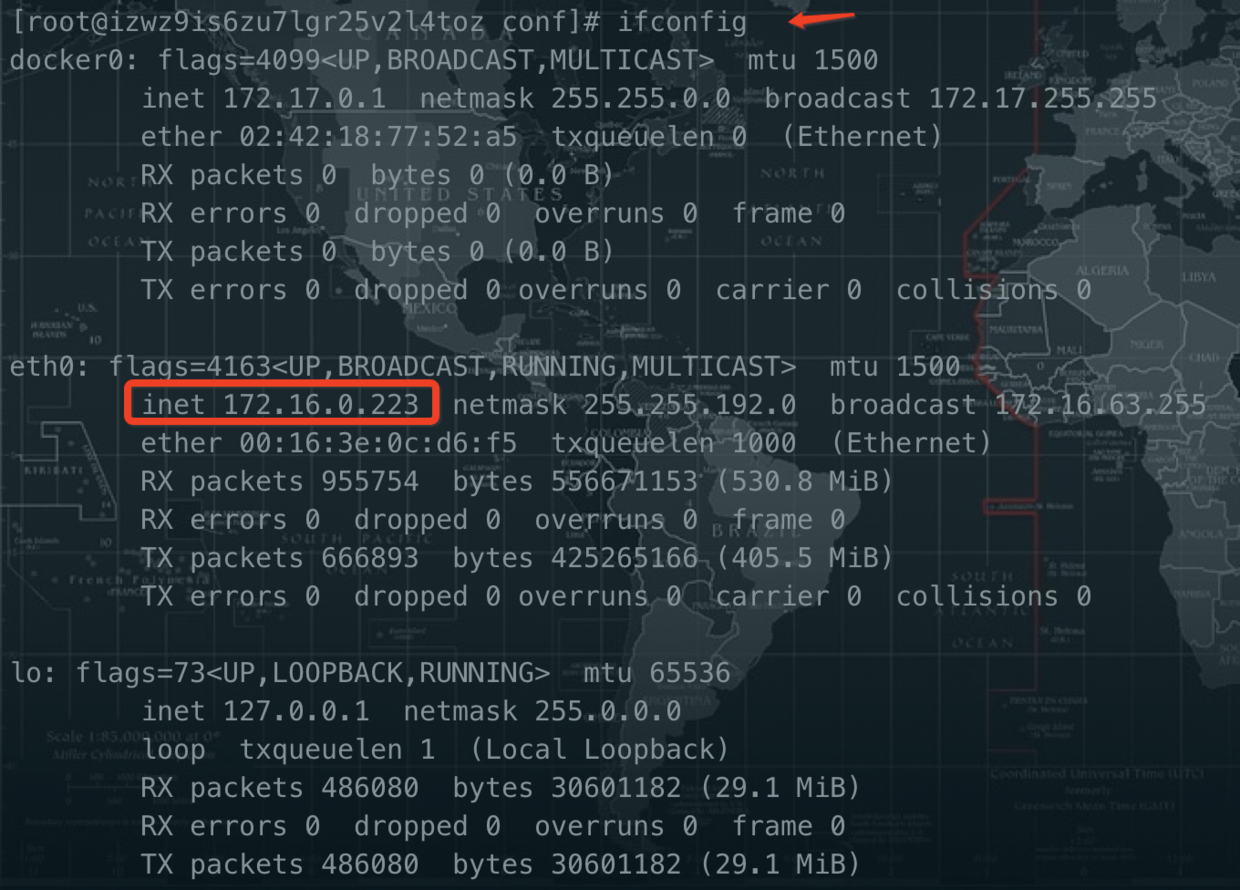
公网ip

- 阿里云防火墙规则设置
这里访问了
8080需要在阿里云后台配置一下
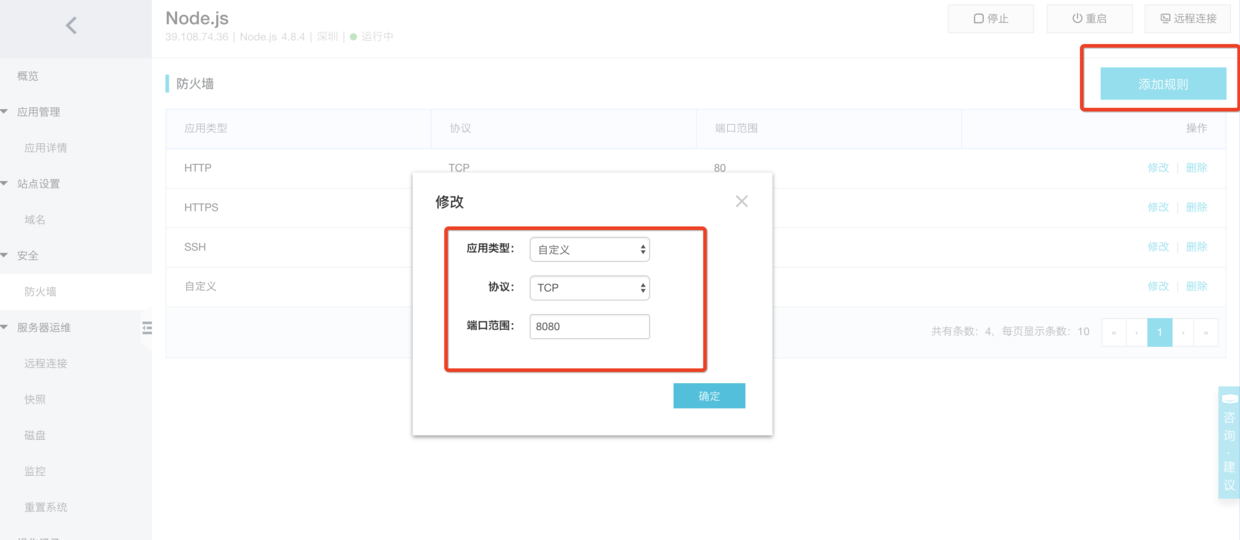
第二步:pm2部署到服务器
首先在服务端全局安装
pm2、npmnode并且建立软链
npm i pm2 -g
重要:请注意:
一定要做建立软链这步,否则出现如下问题
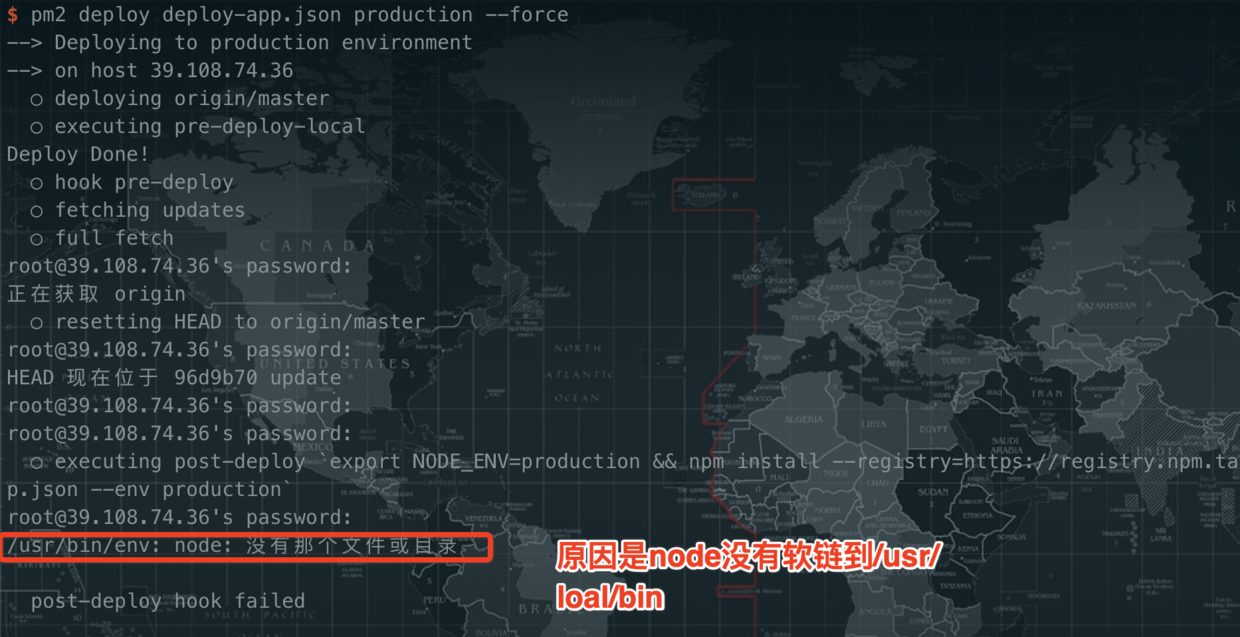
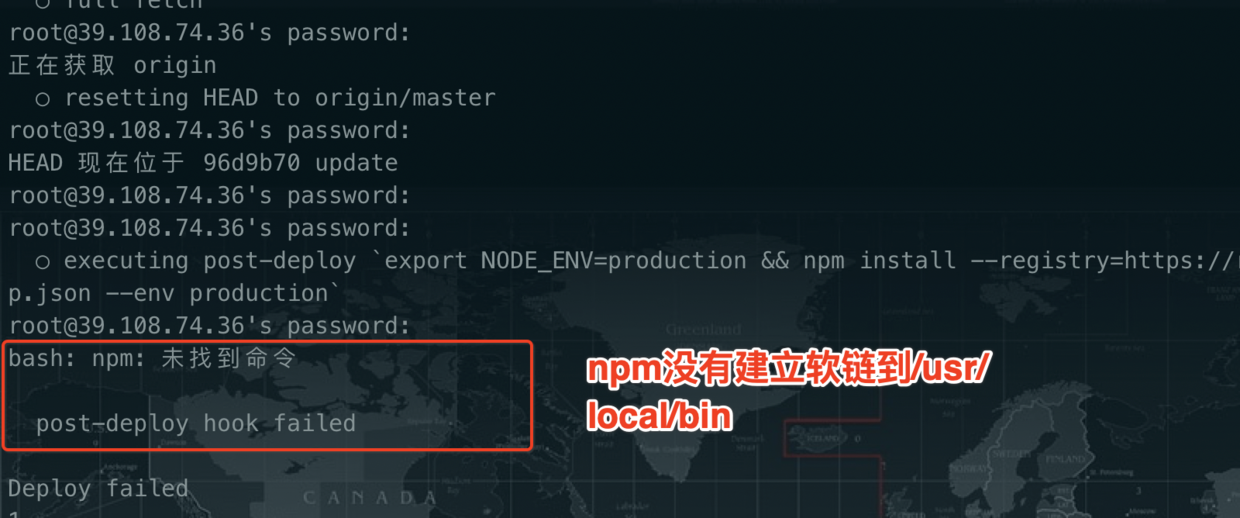
建立
npm软链

建立
node软链

建立
pm2软链

正式部署
- 根目录执行
pm2 deploy deploy-app.json production setup初始化服务端环境 - 根目录执行
pm2 deploy deploy-app.json production --force输入服务端用户root密码,部署即可
来到
/home/production目录查看上传的文件
{
"apps": [
{
"name": "goodsapp-prev",
"script": "server.js",# 根目录server.js文件
"env":{
"COMON_VARIABLE": "true"
},
"env_production": {
"NODE_ENV": "production"
}
}
],
"deploy": {
"production": {
"user": "root",//用户名
"host": ["39.108.74.36"], //公网ip
"ref": "origin/master",
"repo": "https://gitee.com/Poetries1/goods-prev.yesdat.com.git",
"path": "/home/production",
"ssh_options": ["StrictHostKeyChecking=no", "PasswordAuthentication=no"],
"post-deploy": "npm install && pm2 startOrRestart deploy-app.json --env production",
"pre-deploy-local": "echo 'Deploy Done!'",
"env": {
"NODE_ENV": "production"
}
}
}
}
更多配置信息 http://pm2.keymetrics.io/docs/usage/deployment/
pm2 list查看启动的项目

pm2 logs查看启动日志
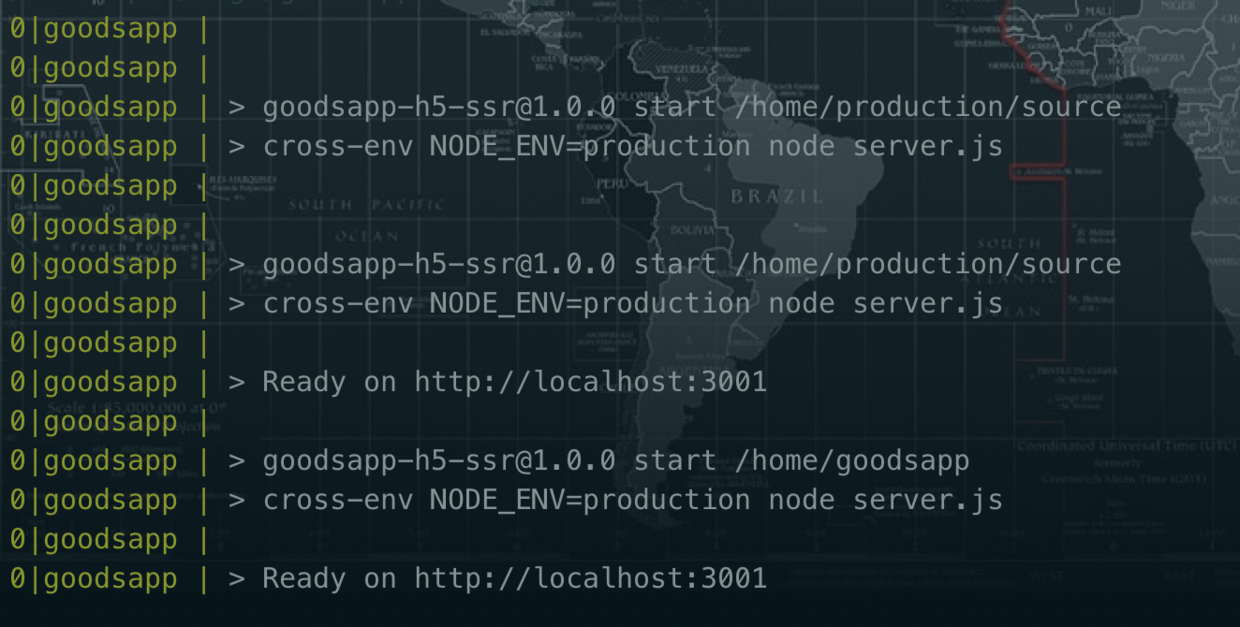
然后在浏览器访问
http://39.108.74.36:8080(http://公网ip:端口)即可看到,到此部署结束